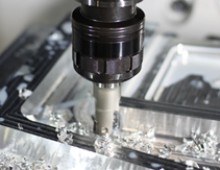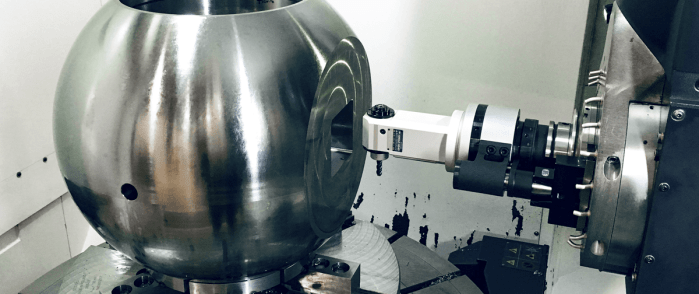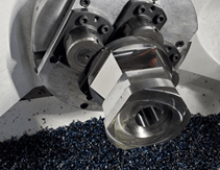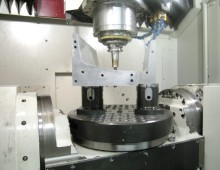Flip the Part or Flip the Tool?
Angle heads from BIG KAISER allow you to flip the tool instead of the part, eliminating both unnecessary setup time and repositioning errors for a more cost effective solution for workpieces.
Sometimes, a little out-of-the-box thinking is all it takes to solve a big workholding problem. John Zaya, workholding product manager here at BIG KAISER, offers this solution to just such a problem about holding very large workpieces.
“Whenever I am asked to offer workholding solutions for very large work, I consider flipping the tool and not the workpiece. The time required to unclamp a large part and use a crane to flip it can be extensive, and flipping the tool by using an angle head might be more cost-effective,” he says. “Form and positional tolerances are also improved when multiple faces of a large workpiece are machined in one setup. The workholding task might be to design a methodology to hold large parts without obstructing access to features on multiple faces. Five-sided access would be best.”
This large housing is affixed to a pallet, which in turn is being clamped to the machine table using four UNILOCK zero-point clamping chucks. UNILOCK allows the part to be pulled down instead of being squeezed, which allows access to five sides to potentially be machined in one original setup.
BIG KAISER can address the 5-sided access issue with UNILOCK, our zero-point clamping system, which uses ground retention knobs on the back side of the fixture plate or workpiece to pull it down onto the top of the table and lock it into an accurate location. The entire assembly can be flipped into new orientations for subsequent operations, or an angle head can be used.
Also, pulling a part down is better than squeezing it. The squeezing process puts stress on the raw material and the material removal process can compound the negative effects of this stress. Pulling the workpiece down from one side allows the material to sit in a free state for machining. Zaya concludes, “Walls may need to be supported to control harmonics that would normally be damped by the squeezing process.”
To learn more about these and other solutions for the defense industry, contact us or check out our latest High Performance Tooling Solutions catalog.




















¿Te pareció interesante o útil? Haznos saber tu opinión agregando tus comentarios o preguntas a continuación.